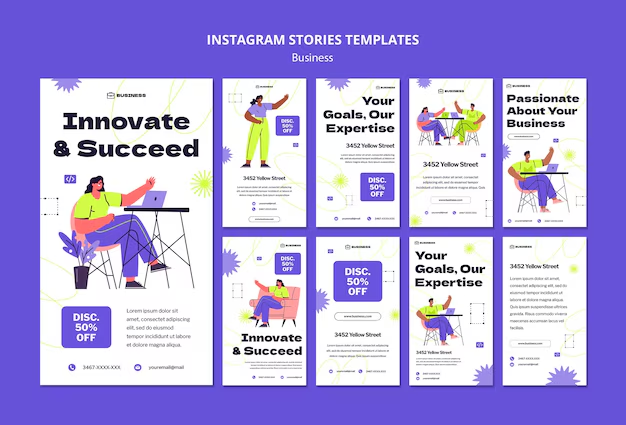Understanding the Competitive Landscape in Business Analysis
In an ever-evolving commercial environment, knowledge of prevailing trends and shifts becomes pivotal for achieving organizational objectives. A keen awareness of rivals and their strategies enables entities to navigate challenges and seize opportunities that arise. Identifying unique selling propositions and differentiating factors grants enterprises a competitive edge, fostering innovation and growth.
Analyzing various elements that influence consumer behavior and preferences is crucial. This approach aids not only in elucidating market needs but also in anticipating future demands. By engaging in regular assessments and leveraging data insights, companies can make informed decisions that align with their goals.
Ultimately, creating a robust strategy that incorporates these insights is vital. Embracing adaptability and responsiveness empowers organizations to thrive amid uncertainties, ensuring long-term viability. Enhancing awareness of market shifts fosters resilience and sparks new avenues for advancement.
Analyzing Market Trends for Growth
Examining evolving patterns within a sector is vital for any organization aspiring to elevate its development. Keeping abreast of shifts in preferences, technologies, and competitive strategies enables firms to make informed choices, positioning themselves advantageously in an ever-changing environment.
Identifying Emerging Patterns
To thrive, it is essential to pinpoint new phenomena that shape consumer behavior and industry dynamics. By conducting thorough research and utilizing analytics, enterprises can uncover significant insights that reveal potential opportunities and risks. Monitoring shifts in customer needs, technological breakthroughs, and regulatory changes allows businesses to adapt quickly, ensuring sustainability and relevance in their offerings.
Leveraging Insights for Strategic Initiatives
Once key trends are identified, organizations can harness this knowledge to craft effective strategies. Aligning products and services with current market expectations increases the likelihood of resonance with target audiences. Moreover, a proactive approach to innovation and resource allocation based on trend analysis fosters resilience, enabling companies to navigate uncertainties more effectively.
Identifying Key Competitors Effectively
Recognizing primary rivals is a crucial component in navigating market dynamics. By pinpointing those who directly contend within similar offerings, organizations can craft informed strategies tailored to outperform them. A clear comprehension of opponents provides insights into their strengths and weaknesses, enabling proactive decision-making.
To achieve this goal, it is essential to employ various research methodologies. Gathering data from multiple sources plays a pivotal role in unveiling competitor profiles, market positioning, product offerings, and customer sentiments.
| Research Method | Description |
|---|---|
| Market Analysis | Assessing overall industry trends and key players. |
| Online Research | Utilizing digital platforms to gather information on competitors. |
| Customer Feedback | Collecting insights on consumer preferences and competitor reputation. |
| SWOT Analysis | Evaluating strengths, weaknesses, opportunities, and threats of competitors. |
Implementing these techniques allows entities to not only identify whom they are up against but also become adept at devising strategies that capitalize on observed opportunities while addressing potential threats. In an ever-evolving marketplace, awareness of one’s rivals is fundamental for progression and resilience.
Strategies for Differentiating Your Brand
Creating a unique identity in a crowded market requires thoughtful approaches that resonate with audiences. By emphasizing distinct qualities and attributes, businesses can carve out a niche and build lasting connections with consumers. Here are several effective strategies to establish your brand’s individuality.
Highlight Unique Selling Propositions
Identifying what sets your offerings apart is crucial. Focus on these key areas:
- Innovation: Showcase novel features or solutions that competitors lack.
- Quality: Ensure your products or services meet superior standards.
- Customer Service: Provide exceptional support and responsiveness.
- Brand Story: Share narratives that resonate emotionally with your target audience.
Engage with Your Audience
Building a strong community around your brand can significantly enhance loyalty. Consider these engagement tactics:
- Utilize social media platforms to interact directly with customers.
- Encourage feedback and implement suggestions.
- Create content that addresses the interests and needs of your audience.
- Host events or webinars to foster a sense of belonging.
Utilizing SWOT Analysis for Insights
A comprehensive evaluation method provides valuable perspectives on an organization’s position within its field. By examining internal attributes and external elements, this strategic tool enables firms to identify strengths, weaknesses, opportunities, and threats. Such analysis fosters informed decision-making and strategic planning, enhancing the potential for achieving set objectives.
Components of SWOT Analysis
Each quadrant of this analytical framework holds significance in painting a clear picture of an organization’s condition. Below is a breakdown of these components:
| Strengths | Weaknesses |
|---|---|
| Unique resources | Lack of expertise |
| Strong brand recognition | Limited product range |
| Robust customer relationships | High operational costs |
| Opportunities | Threats |
|---|---|
| Emerging markets | Intense competition |
| Technological advancements | Changing regulations |
| Shifting consumer preferences | Economic downturns |
Implementing SWOT Analysis
To harness insights from this framework, organizations should conduct workshops with key stakeholders, encouraging diverse viewpoints. Gathering data through surveys, market research, and performance metrics deepens the analysis. Post-evaluation, it’s crucial to prioritize findings and integrate them into strategic initiatives, ensuring alignment with overall goals.
Benchmarking Performance Against Rivals
Evaluating performance in relation to competitors is essential for organizations aiming to enhance their market position. By gauging various metrics and practices, companies can identify areas of strength and weakness, informing strategic decisions that lead to improved outcomes. This process not only illuminates one’s standing in the marketplace but also fosters an environment of continuous improvement.
Key Metrics for Comparison
When assessing performance, it is vital to focus on specific metrics that truly reflect operational efficacy. Financial outcomes, customer satisfaction levels, product quality, and market share are just a few areas worth examining. Analyzing these indicators helps organizations uncover insights that can drive innovation and better serve their clientele.
Implementing Changes Based on Insights
Once performance gaps have been identified, organizations should prioritize actionable strategies aimed at bridging these divides. This may involve refining processes, investing in technology, or enhancing employee training. Continuous monitoring of results ensures that the adapted strategies are effective and responsive to shifting market dynamics.
Leveraging Technology for Competitive Advantage
In today’s dynamic marketplace, organizations rely on innovative solutions to stand out from rivals. Embracing advancements enables firms to optimize operations, enhance customer experiences, and drive growth. This shift towards digitalization offers numerous pathways to bolster an entity’s position within its sector.
Key areas where technology can be effectively utilized include:
- Data Analytics: Harnessing insights from data to make informed decisions and tailor offerings to specific customer needs.
- Automation: Streamlining processes through automated systems to increase efficiency and reduce operational costs.
- Customer Relationship Management (CRM): Utilizing CRM software to manage interactions and improve customer satisfaction and retention.
- Artificial Intelligence (AI): Implementing AI-driven tools for enhanced personalization and predictive analytics, thereby anticipating market trends.
By strategically integrating these technologies, organizations can create a robust foundation for innovation and agility. This proactive approach positions entities not only to meet current demands but also to anticipate future shifts within their industries.
Moreover, collaboration tools foster improved team communication, facilitating creativity and the rapid exchange of ideas. Enhanced connectivity allows for a more responsive and adaptive organizational structure.
In conclusion, leveraging technology serves as a vital catalyst for growth and differentiation. By prioritizing these innovations, entities can enhance their strategic advantage, leading to sustained progress and market leadership.
Q&A: What is competitive landscape
What is competitive landscape analysis, and why is it important?
Competitive landscape analysis is the process of evaluating and understanding the competition within a market. It is important because it helps businesses identify their position, strengths, weaknesses, and opportunities relative to competitors.
How does competitive intelligence contribute to business success?
Competitive intelligence involves gathering and analyzing information about competitors to inform strategic decisions. It contributes to business success by enabling companies to anticipate market trends and adapt their strategies accordingly.
What are the key components of a competitive analysis?
The key components of a competitive analysis include identifying direct and indirect competitors, analyzing their strengths and weaknesses, assessing market share, and evaluating their marketing strategies and positioning.
What analysis framework can be used for conducting competitive analysis?
One commonly used analysis framework for conducting competitive analysis is Michael Porter’s Five Forces framework, which evaluates the competitive pressures in an industry and helps identify the attractiveness of a market.
How can businesses identify indirect competitors in their market?
Businesses can identify indirect competitors by analyzing alternative products or services that fulfill similar customer needs, even if they do not compete directly in the same category.
What role does mapping play in competitive analysis?
Mapping in competitive analysis helps visualize the competitive landscape by plotting competitors based on various criteria, such as market share, pricing, and product features, making it easier to identify gaps and opportunities.
How can a competitive analysis inform marketing strategies?
A competitive analysis can inform marketing strategies by revealing insights into competitors’ strengths and weaknesses, allowing businesses to differentiate their offerings and tailor their messaging to better meet customer needs.
What should be included in a competitive landscape report for a new product?
A competitive landscape report for a new product should include an overview of the market, key competitors, their product offerings, pricing strategies, market positioning, and potential challenges and opportunities.
Why is it essential to analyze keywords in competitive analysis?
Analyzing keywords in competitive analysis is essential because it helps businesses understand the search terms competitors are targeting, which can inform their own SEO strategies and content marketing efforts to enhance online visibility.
How can businesses use competitive analysis to enhance their product development process?
Businesses can use competitive analysis to enhance their product development process by identifying unmet customer needs, analyzing features of competing products, and incorporating successful elements into their own offerings to better serve the market.
What are the steps to create a competitive landscape analysis?
Creating a competitive landscape analysis involves identifying direct and indirect competitors, analyzing their strengths and weaknesses, evaluating market positioning, and using frameworks like competitive matrices or strategic group analysis.
How does strategic group analysis contribute to understanding market dynamics?
Strategic group analysis categorizes competitors based on similar characteristics, allowing businesses to identify competitive pressures within specific groups and understand market dynamics more effectively.
What is a competitive landscape analysis framework, and how is it used?
A competitive landscape analysis framework provides a structured approach to assess competitors and market conditions. It helps businesses understand their position in the market and make informed strategic decisions.
How can PEST analysis complement competitive landscape analysis?
PEST analysis examines external factors such as political, economic, social, and technological influences that can impact the competitive landscape, helping businesses to identify opportunities and threats in the market.
What is the importance of analyzing direct competitors in competitive landscape analysis?
Analyzing direct competitors is important because it allows businesses to understand their strengths, weaknesses, market share, and strategies, enabling them to position themselves effectively against these competitors.
What role does perceptual mapping play in competitive analysis?
Perceptual mapping visually represents how competitors are viewed in the market based on key attributes, helping businesses identify gaps in the market and understand customer perceptions.
How does competitive landscape analysis assist in making business decisions?
Competitive landscape analysis assists in making business decisions by providing insights into market trends, competitor strategies, and potential opportunities, enabling companies to align their strategies with market demands.
What data points are essential for conducting a competitive landscape analysis?
Essential data points for conducting a competitive landscape analysis include market share, pricing strategies, product features, marketing strategies, customer reviews, and financial performance of competitors.
How can competitive landscape analysis inform product development?
Competitive landscape analysis informs product development by revealing competitors’ strengths and weaknesses, customer needs, and market trends, allowing businesses to create products that better meet customer demands.
Why is it crucial to continuously perform competitive landscape analysis?
Continuously performing competitive landscape analysis is crucial because the market is dynamic, with new entrants and changing customer preferences. Regular analysis helps businesses adapt their strategies and maintain a competitive edge.



